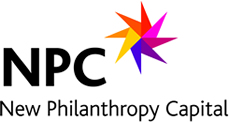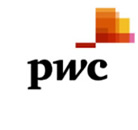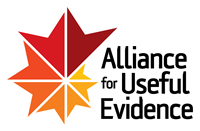Alliance Magazine Guest Blog: Data for good - what can data do for philanthropy?
Larry McGill - Vice President for Research, The Foundation Center
So, on top of everything else, foundations are supposed to compile and maintain data on their activities? And share it with other foundations? And perhaps even make it public? And do all of this willingly, because it will make philanthropy more effective? It is up to foundations to decide whether or not to do this, but it is becoming clearer every day that the answer is being thrust upon them, whether foundations are ready or not.
It is impossible to escape the notion that we have entered the world of ‘Big Data’. The financial industry, corporations, marketing firms, bilateral and multilateral organizations, and even governments are moving proactively to take advantage of information technology that allows data to be rapidly and efficiently collected, processed, organized, accessed, and put into the service of maximizing profits, gathering market intelligence and optimizing the flow of international aid, among other things. More than 300,000 businesses currently subscribe to data services provided by New York-based Bloomberg LP, which has captured a third of what has become a $16 billion financial data market. The OECD (Organization for Economic Cooperation and Development), whose stated objective is to produce analyses and policy recommendations that are ‘independent and evidence-based’, works with 34 member countries to collect and make publicly available real-time data on hundreds of economic, political and social measures.
At the same time, calls for ‘opening’ existing proprietary data sets for public consumption have been proliferating, on the theory that independent software developers will be able to build new applications that allow users to access the data in ways that go far beyond any possibilities originally envisioned by the data collectors themselves. In that spirit, the World Bank recently opened up for public access data on more than 8,000 indicators from its massive statistical database.
As these transformative developments in information technology are taking place, what is philanthropy doing to take advantage of them? Does philanthropy have a plan for building the kind of knowledge base and knowledge tools that will allow it to identify areas of need, emerging trends, key actors and institutions engaging in social investment activities, patterns and gaps in the provision of aid and other types of support, intervention strategies that work and don’t work, and opportunities for collaboration to improve on-the-ground impact?
The payoffs of having data
Collecting data on philanthropy around the world is no small challenge. As European Foundation Centre (EFC) chief executive Gerry Salole explains in another article in this special feature, just trying to count the total number of foundations in Europe is ‘an impossible task given the level of differences that exist between foundations within a given European country, not to mention across borders, and the constantly mutating and changing contexts in which they operate’. Moreover, one might fairly ask, how does knowing the total number of foundations in Europe help foundations do their work anyway?
Supporting advocacy
While it may not be relevant to the work of any one foundation, it is certainly relevant to foundations collectively. A European Foundation Statute that has the potential to facilitate the work of more than 100,000 foundations representing total annual expenditures of more than €50 billion (a back-of-the-envelope estimate derived from published information on the EFC website), is more likely to pass than a statute that has the potential to facilitate the work of an unknown number of foundations. The work of the EFC and the recently formed Foundation Council of Europe can harness the persuasive power of large numbers only if the numbers are known.
For market intelligence
For an individual foundation, though, what is most important is ‘market intelligence’, to borrow a phrase from business. That means understanding potential constituencies, unmet needs among those constituencies, mechanisms for meeting those needs, and the work of other organizations operating in that market.
Understanding potential constituencies means compiling data on who they are. Where do they live? What do they look like demographically? How do they fit into the larger social, cultural and economic environment in which they are situated?
Understanding unmet needs among those constituencies means compiling data on the scope of the problems or issues that disproportionately affect them. How are specific constituencies (eg women, people of colour, rural populations and people with disabilities) affected by these problems or issues?
Understanding mechanisms for meeting the needs of constituencies means understanding what types of intervention have been tried and with what levels of success.
Understanding the work of other organizations operating in the same ‘market’ means compiling data on the activities of other foundations, as well as bilateral and multilateral organizations that are working on these problems or issues. What are their theories of change? What types of interventions are they engaged in? What organizations on the ground do they work with? How does the work of your foundation fit into this picture?
Having access to data in each of these areas minimizes the risk of making poor investment decisions. Put another way, data give foundations their best shot at making a difference through their work. Just as in the business world, though, this does not guarantee impact. Nor does it eliminate risk. Minimizing risk is the only thing that foundations have any power to control.
For monitoring and learning
Once funds have been expended, there is little that foundations can do to further influence the course that events will take. The ‘market’ will do as it will, as the funds catalyse events, actions and reactions among the constituencies that are touched by the work. But what foundations can do once funds have been released is monitor the work and learn from the consequences generated by it. And that, once again, calls for the collection of data.
Just as gathering ‘market intelligence’ on what has been tried and what works is part of the due diligence that foundations must do before developing and implementing their intervention strategies, they owe it to the field to collect and share data on how well their own interventions actually worked, so others can do their due diligence as well. There must be collective learning as well as individual learning.
In short, the two most powerful tools foundations have for maximizing the impact of their investments are minimizing risk and drawing lessons from consequences. And both of these require data.
This guest blog is an excerpt from Alliance Magazine’s special feature ‘What can data do for philanthropy’ first published on 1st September 2012, read the full article here. To receive comprehensive coverage of the philanthropy and social investment sectors subscribe to Alliance.






+44 (0)207 438 2598
[email protected]
Follow us on Twitter
Join us on LinkedIn
Join us on Facebook
Our photos on Flickr
Subscribe to our Feed